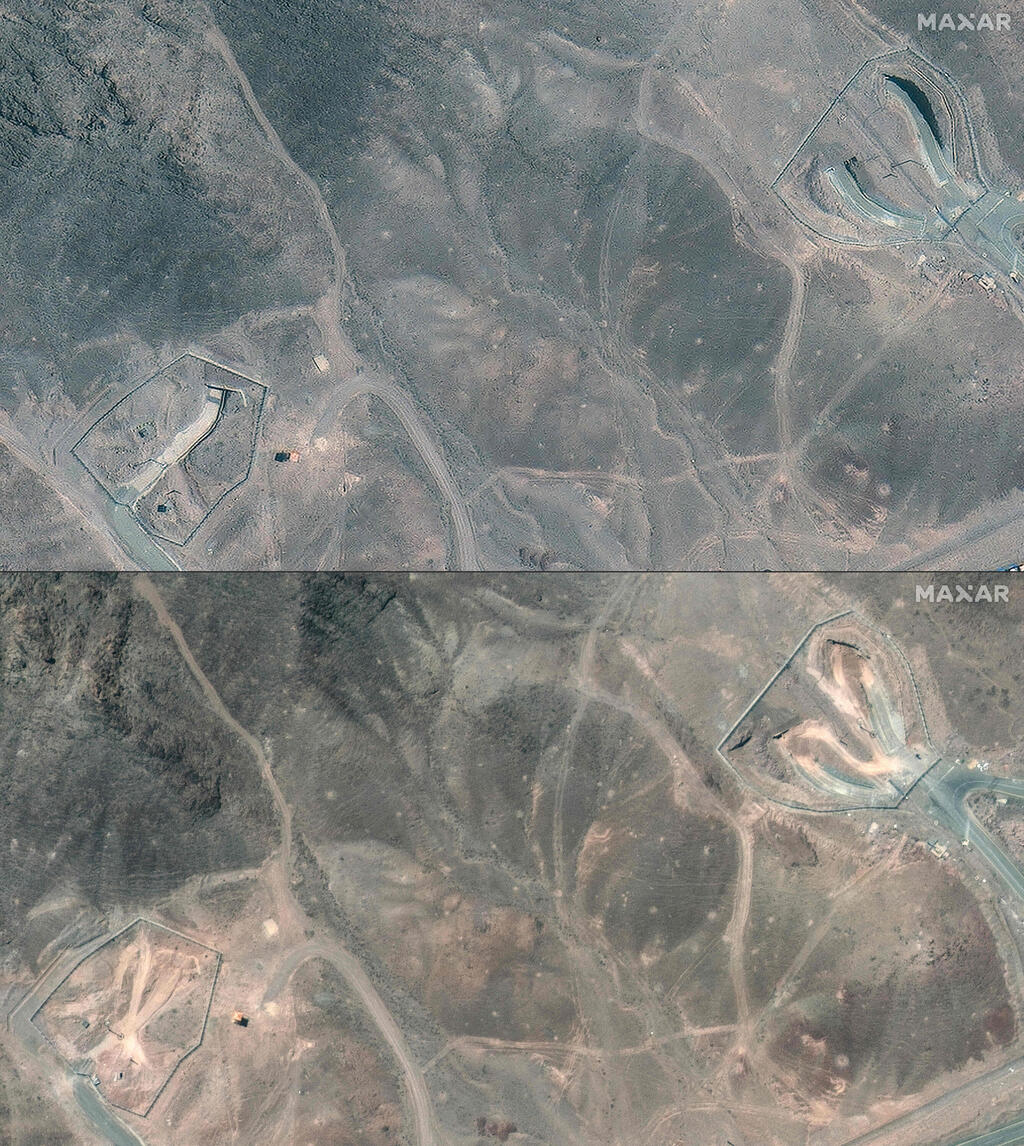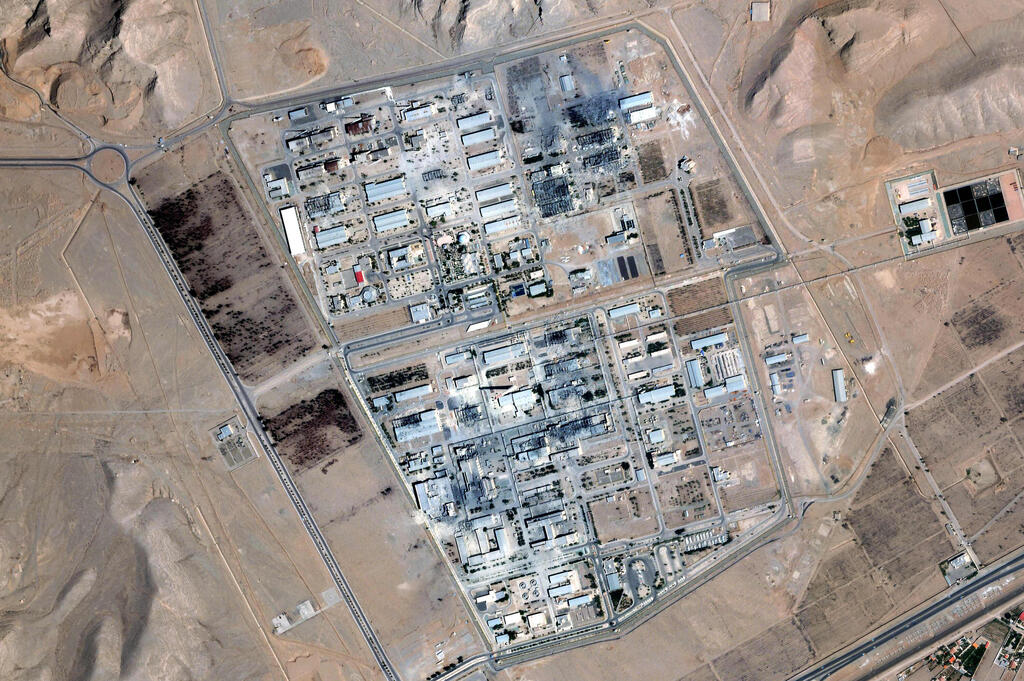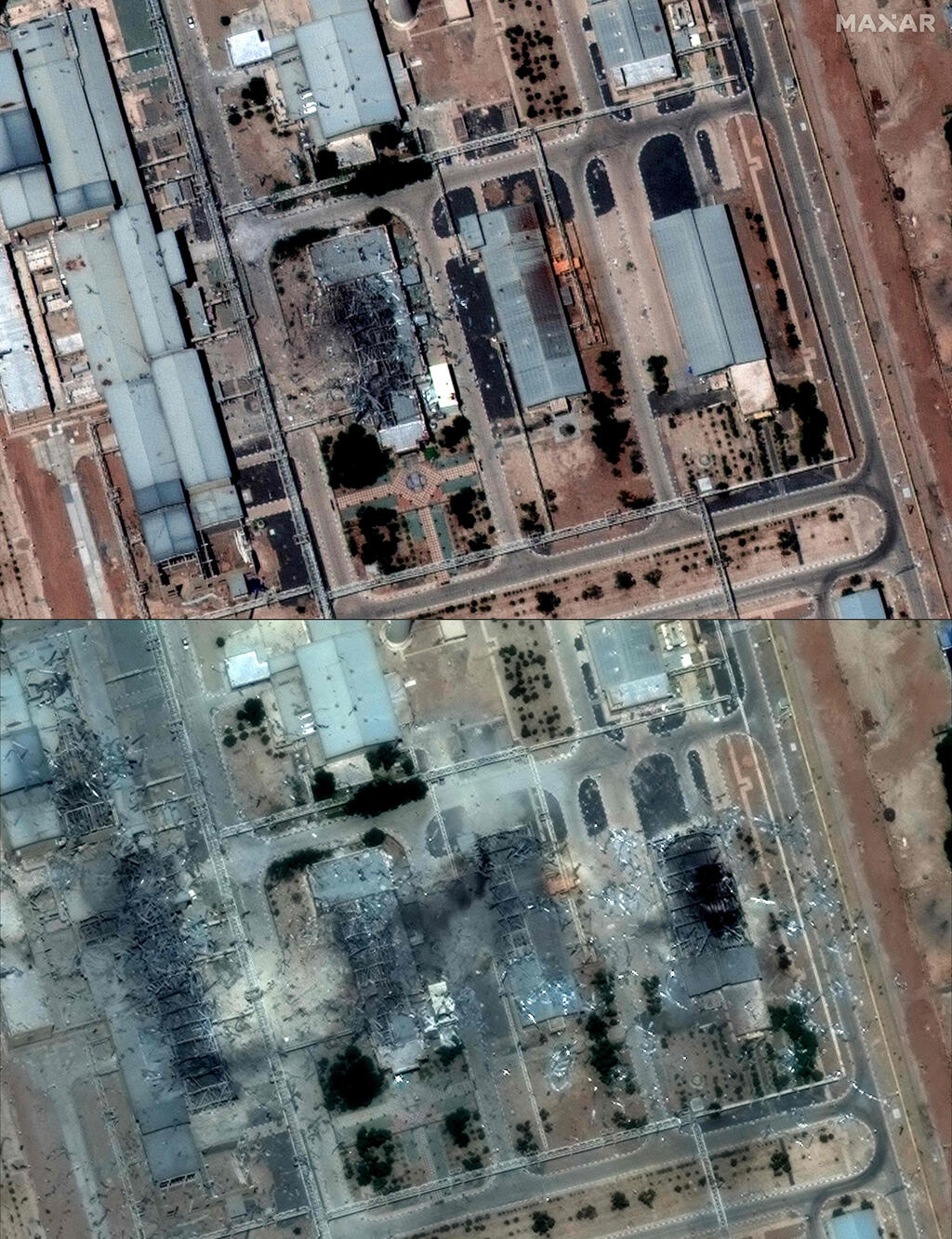The Pentagon said Wednesday evening that, according to its assessment, the Israeli and American strikes in Iran have set back the Iranian nuclear program by one to two years. Pentagon spokesperson Sean Parnell emphasized that the department’s position regarding the results of the U.S. strikes on the nuclear facilities in Fordow, Natanz, and Isfahan remains unchanged—that those facilities were destroyed.
In a briefing to reporters during which Parnell shared the assessment, he added: "It’s likely closer to two years." The Pentagon’s statement comes after a week and a half of conflicting declarations and reports about the outcome of the U.S. bombings at the three nuclear sites, particularly the Fordow uranium enrichment facility, which is considered the most fortified and therefore most critical to neutralize.
3 View gallery


Before and after images of Fordow
(Photo: SATELLITE IMAGE ©2025 MAXAR TECHNOLOGIES / AFP)
On the night of the American attack, President Donald Trump appeared on camera and declared that all three sites were completely destroyed and that Iran’s nuclear program had been “obliterated."However, about half a day later, the Chairman of the Joint Chiefs of Staff, Gen. Dan Caine, was more cautious. While he said the sites had suffered significant damage, he avoided using the word “obliterated” and stated that it was “too early” to determine the precise results of the bombings.
Shortly afterward, CNN and The New York Times reported that, according to a preliminary assessment by one of the U.S. intelligence agencies, Iran’s nuclear program had only been delayed by several months—not years. These reports infuriated Trump and his team, who claimed the coverage was biased and distorted the results of the U.S. operation, relying on a partial and unformed report. Trump’s Secretary of Defense Pete Hegseth also insisted that the nuclear sites were destroyed and accused critics of having political motives and trying to "undermine the president."
3 View gallery


The Natanz nuclear facility
(Photo: Maxar Technologies/Handout via REUTERS, PLANET LABS PBC / AFP)
In the days that followed, Trump continued to insist the facilities were destroyed, even claiming that Israeli operatives had been inside the Fordow facility and would soon report on the extensive damage caused to the underground uranium enrichment site.
Get the Ynetnews app on your smartphone: Google Play: https://bit.ly/4eJ37pE | Apple App Store: https://bit.ly/3ZL7iNv
"They have guys that go in there after the hit, they said it was total obliteration," the president declared. Aryeh Deri, chairman of the Shas party and a de facto member of the Israeli cabinet, rejected this claim. In an interview with the ultra-Orthodox news outlet Kikar HaShabbat, when asked about the extent of the damage to Iran’s nuclear project, Deri responded: “No one knows for sure, because no one has been there yet.”
3 View gallery


Before and after images of Isfahan
(Photo: SATELLITE IMAGE ©2025 MAXAR TECHNOLOGIES / AFP)
The Pentagon’s statement Wednesday evening also differs somewhat from a previously published Israeli assessment. That report, released last week by the Israeli Atomic Energy Commission, claimed that the U.S. strikes on Iran’s nuclear sites—combined with Israeli strikes on other components of Iran’s nuclear program—“have set back Iran’s ability to develop nuclear weapons by many years.”
However, CNN later reported that Israeli officials actually estimate the program was delayed by only two years and that, in their assessment, the damage caused to Fordow in the U.S. strike was “less than expected.”


